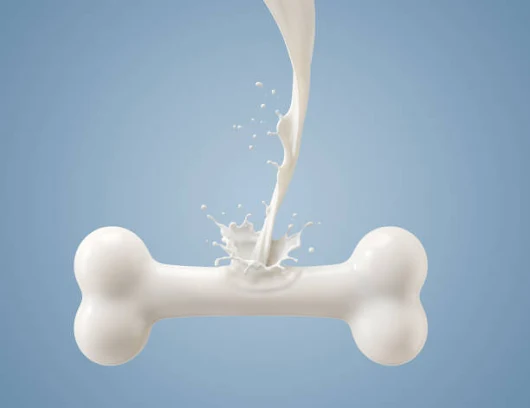What are the causes, symptoms, complications and treatment of vitamin D deficiency?
Contents
- What is vitamin D?....
- What are sources of vitamin D?............
- What is the function of vitamin D in our body? Why do we need vitamin D?............
- What is the daily requirement of vitamin D?.............
- What causes vitamin D deficiency?...............
- What are symptoms of vitamin D deficiency?............
- What are the complications of vitamin D deficiency?...........
- How to prevent vitamin D deficiency?........
- How to treat vitamin D deficiency?....
- How to test vitamin D in our body?.....
- What is the dose of vitamin D supplementation?.....
- Do we overdose on vitamin D?...........
- What should I do if I think I lack vitamin D?......
What is vitamin D?
Vitamin D is an essential micronutrient which can be found in various food sources. Vitamin D is fat-soluble, and few foods naturally have vitamin D. Except fatty fish liver, other foods are poor sources of vitamin D. Vitamin D is needed for bone metabolism and calcium balance in the body.What are sources of vitamin D?
Synthesis of vitamin D in skin is the main source of vitamin D for humans. The vitamin D in the skin is formed by exposure of Ultraviolet light into the skin, converting 7-dehydrocholesterol to provitamin D3. This is then converted to cholecalciferol by temperature dependent rearrangement. The sun exposure to face and arms only produces up to 200 International units per day of vitamin D.
Fatty fish liver is another major source. Minor sources include milk, meat and animal liver, eggs, some vegetables and mushrooms.
 |
| vitamin d and bone |
What is the function of vitamin D in our body? Why do we need vitamin D?
After production in skin, or after taking vitamin D (D2 or D3 from food), our blood is converted to 25-hydroxyvitamin D and then to 1,25-hydroxyvitamin D in the kidney. This is the active form of vitamin D. The functions of vitamin D are:
- Calcium Homeostasis
- Bone metabolism
- Phosphorus metabolism
- Muscle strength
- Prevention from cancer
- Prevention form heart disease like hypertension and heart attack
- Prevention from other endocrine diseases and diabetes
- Boosting immune system
- Helping brain development and prevention of cognitive function decline
- Prevention from mental illnesses
What is the daily requirement of vitamin D?
Recommended dietary allowance RDA of vitamin D is as follows:- Up to 12 months of age: 400 IU per day (=10 mcg)
- Children 1-18 years, people up to 70 years: 600 IU (=15mcg) per day
- People above 70 years: 800 IU (=20mcg) per day
People often have low Vitamin D intake, and most people are deficient in vitamin D. Many people are at considerable risk for deficiency. Thus, it's recommended for regular supplement of vitamin D to all the high-risk populations. Now a days milk fortification with vitamin D has also started to meet this requirement.
People with malabsorption disorders require high dose supplementation of vitamin D as high as 40000 IU per day.
What causes vitamin D deficiency?
Worldwide, billions of people lack vitamin D. Some factors mentioned below may cause vitamin D deficiency or resistance in our body:- Low exposure to sunlight
- Low dietary intake
- Low fat intake
- Malabsorption disorders or syndromes
- Residence in regions where there is low sun exposure
- Impaired ability of body to use inactive vitamin D (liver or renal dysfunction)
- Resistance of body to act to the vitamin D present in our body
- Older age
- High dose of steroids drug intake
 |
| vitamin d deficiency depiction |
What are symptoms of vitamin D deficiency?
- Most people are asymptomatic initially
- Bone pain and tenderness
- Muscle weakness
- Fractures
- Difficulty walking
What are the complications of vitamin D deficiency?
- Increases bone loss
- Osteopenia and osteoporosis
- Hypocalcemia
- Hypophosphatemia
- Secondary hyperparathyroidism
- Phosphaturia
- Osteomalacia
- Muscle weakness, cancers, decreased immunity or increased autoimmune diseases, asthma, hypertension, MI, diabetes, bad pregnancy outcomes
How to prevent vitamin D deficiency?
- Get adequate exposure to direct sunlight, especially in the morning (10 am to 2 am) time when there is adequate concentration and band of UV light in sunlight
- Eat fish and fish liver that have vitamin D (cod, salmon, swordfish, tuna)
- Eat eggs, meat and animal liver
- Eat fortified milk or juices with vitamin D
How to treat vitamin D deficiency?
Serum vitamin D (25-hydroxyvitamin D) level can be measured by blood test to confirm or screen for vitamin D deficiency. The common consensus is that 30 ng/mL (nanogram per milliliter) or 75 nmol/L is sufficient for most individuals. However, the reference range may vary depending on the population and consensus.
Serum PTH (parathyroid hormone) level is inversely related to serum vitamin D level so it can also be measured to check for vitamin D deficiency.
What is the dose of vitamin D supplementation?
Despite adequate dietary and behavioral measures to prevent vitamin D deficiency, people may have deficiency and may even have clinical manifestations.There are two forms of vitamin D supplementations available cynically for supplementation viz. Cholecalciferol (D3) and ergocalciferol (D2). These supplementations are available in various doses like 400, 600, 800, 1000, 2000, 5000, 10000, 50000, 60000 IU capsules, powder or tablets. In some countries they are available in Injectable form as well.
Vitamin d supplementation can be done by any of following regimen depending up on patient factors like severity, patients' absorptive ability, compliance or clinical manifestations:
- Initially 60000 IU of D2 or D3 once a week for 6-8 weeks (about 2 months) then 800 IU per day
- 1000 IU of D2 or D3 per day
- 600-800 IU of D2 or D3 per day
- 10000 to 60000 IU per day for malabsorption disorders depending upon severity of malabsorption and deficiency
Calcium supplementation may also be needed with supplementation of vitamin D.
Is vitamin D3 the same as vitamin D 25 hydroxyvitamin D3?
25-hydroxyvitamin D3 is one of the inactive forms of the vitamin D which is found in blood and its value is measured to check for vitamin D deficiency.
Is vitamin D same as D3 or D2?
Vitamin D has two forms, which are vitamin D2 and D3. The source of vitamin D3 is skin and animal foods where as vitamin D2 is found in plant sources.
Do we overdose on vitamin D?
Toxic dose of vitamin D supplementation is not clear though tolerable upper limit is set. For children above 9 years and adults, the largest upper limit is 4000 IU (100mcg) per day, while that for children it lower. Following symptoms might be seen if vitamin D toxicity or overdose occurs:- Decreased appetite
- Weight loss
- Irregular heartbeat
What should I do if I think I lack vitamin D?
If you think you have vitamin D deficiency you need to visit your doctor and he will ask you some questions about symptoms and signs of vitamin D deficiency. He may order some tests to confirm if you have vitamin D deficiency. After the reports he will treat it depending upon multiple factors and personalized treatment plan for you. He will also ask you for follow-up to confirm the correction of the deficiency, relief of symptoms, and help you with future prevention of the same condition. A repeat check of vitamin D level can usually be done after 3-4 months of supplementation intake.
You can also book an appointment with us if you think you have vitamin D deficiency or any health problem. Use the contact us button or the chat box below. Thank you for reading.










What is your say on this?